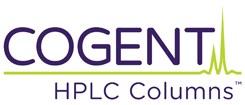Question: What suggestion can you offer for analysis of metabolites such as glucose, pyruvate, taurocholic acid, gamma glutamylcysteine, glycochenodeoxycholate, glycerol-3-phosphate, spermidine, taurine, and s-adenosylmethionine?
Suggestion: We would recommend starting by using the Cogent Diamond Hydride™ HPLC column for this analysis. Many of these compounds are quite polar and would be very difficult to separate by conventional Reversed Phase methods and The Diamond Hydride™ column can retain compounds based on Aqueous Normal Phase ANP chromatography. There are a variety of functional groups present in these analytes so it is difficult to say which mobile phase additive would be most effective overall.
Start with 10mM ammonium acetate in solvent A and solvent B and next try 0.1% formic acid. You may even want to consider ammonium acetate in one solvent and formic acid in the other if you find that you need a pH Gradient.
Additives to consider are ammonium formate and acetic acid. Use of either isopropanol or methanol as 50% of the A solvent for complex matrices is recommended. This is because these solvents help to wash strongly adsorbed matrix components from the column and extend column life.
An example Gradient might be:
—A: 50:50 DI water / methanol / 0.1% formic acid
—B: acetonitrile / 0.1% formic acid
| Time (minutes) | %B |
| 0 | 95 |
| 2 | 95 |
| 10 | 0 |
| 14 | 0 |
| 15 | 95 |
You would start at high organic (B solvent) and end at high water (in this case 50% water due to the methanol in the A solvent) and keep a hold time to help wash some strongly retained matrix components off the column. You can adjust the gradient steepness if you need more separation.


